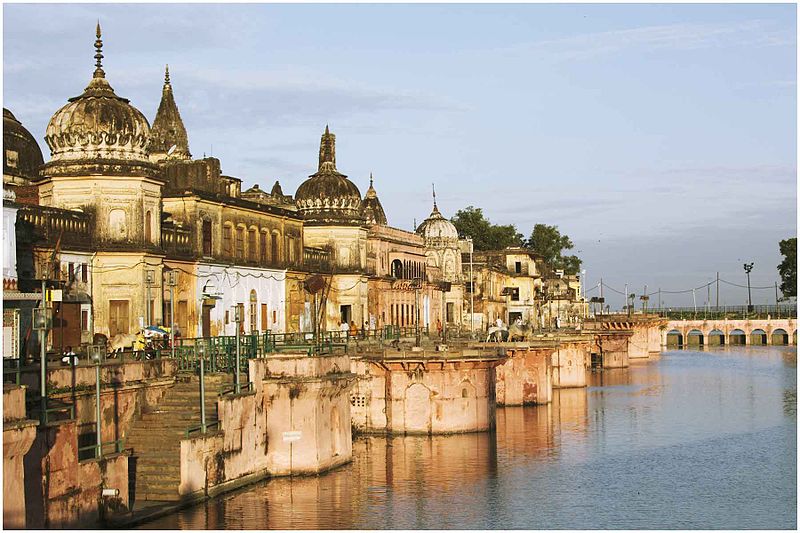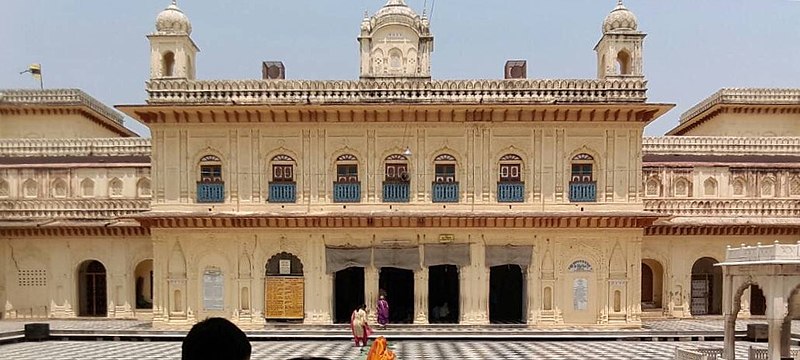Places to visit in Ayodhya
I think after Uttara Khand, it’s only Uttar Pradesh which is mainly known for religious tourism. Ayodhya, the birthplace of
I think after Uttara Khand, it’s only Uttar Pradesh which is mainly known for religious tourism. Ayodhya, the birthplace of Lord Ram, is one of seven most holy cities of India. Located on the edge of Saryu River and flanked by many striking temples, Ayodhya has been a major pilgrimage spot for Hindus since the ancient period. According to Hindu epic Ramayana, earlier it was known as ‘Kausal’ and was the royal capital of ‘Surya dynasty’, in which Lord Ram was born. Over the course of time, Ayodhya also witnessed Buddhist, Jain, and Islamic history. Consequently, the remnants led the Hindus and Muslims in a clash. For last 1-2 decades, ‘The Babar Masjid & Ram Mandir’ agenda has been the most discussed topic in the country. But today, we’re not going to talk about it. We are here to tell you about the places to visit in Ayodhya and the spiritual grace of city where once the almighty himself incarnated. So, let’s explore what is in this inexplicable city that Lord chose it as his birthplace.
Ram Janmabhoomi Temple

When you talk about the tourism of Ayodhya, the list would obviously begin with the Ram Janmabhoomi temple, the birthplace of Lord Ram. To be more specific, today, there is no temple actually. It was demolished by the Mughal Emperor Babur in 1528 and he constructed a mosque over that same place. In 1992, the mosque was also wrecked by the Hindus which led a brutal violence. After being alleged with a long period of dispute, recently it has been opened for the public visit. UP Chief Minister Yogi Adityanath along with millions of devotees is still fighting for the construction Ram Mandir exactly on that place again. Though the temple is ruined, devotees still visit the place.
Hanuman Garhi
Where there is Lord Ram, there is his fervent devotee Hanuman, so how Ayodhya can be devoid of a Hanuman Temple. There are numerous significant temples in Ayodhya but Hanuman Garhi is the most important and scared. Approachable by a high scramble of 76 steps, Hanuman Garhi is believed to be a 10th-century temple. At that time, this land was possessed by the Nawab of Aawadh and he had denoted it to build the temple. According to mythology, this is the place where Lord Hanuman used to reside in Treta Yug and safeguarded the entire Ayodhya. The devotees believe that a climb of 76 steps and the visit of this holy temple make all your wishes to be fulfilled. So, people visit Hanuman Garhi with a high reverence and seek the blessings of Lord Hanuman. As soon as you’ll complete the 76 steps high climb, the enigmatic aura and the architecture of this temple will spellbind you. Rendering an arresting four-sided fort look and with the awe-inspiring bastions at each of its corner, Hanuman Garhi Temple reveals the commendable craftsmanship of ancient Hindu rulers.
Nageshwarnath Temple
The most interesting thing about exploring the historical and religious places is that you get to learn many intriguing stories that today seem a mystery but had happened once for real. Nageshwarnath Temple is associated with one such story. According to Hindu mythology, the temple was built by Kush, the younger son of Lord Ram. It has survived in the taste of time even when the entire Ayodhya was abandoned and was covered with the dense forests. It was only the Nageshwarnth Temple which helped king Vikramaditya to identify that this region was actually Ayodhya. The colorful ornamentation and jaw-breaking structures & carvings are the main reasons to visit Nageshwarnath Temple. In the temple, Lord Shiva is depicted being worshipped by the Nagas. The Maha Shivratri is celebrated with utmost pomp and gaiety in Nageshwarnath Temple.
Mausoleum of Bahu Begum
It’s well known how badly Ayodhya was affected by the Muslim rulers. Babri Masjid is the biggest example of it. The city has always been a pilgrimage spot for Hindus but under Muslim regime, it was destroyed. And Muslim rulers built their Mausoleums over there. Built in 1816, Mausoleum of Bahu Begum is the tomb of Shuja-ud-daula’s wife. Constructed in typical Muslim architectural style, Mausoleum of Bahu Begum is a distinctive monument in Ayodhya. The glossy white marble of walls and the lush greenery all around increase the splendor of this memorial million times more. If you love history buff, you’ll this place too.
Kanak Bhawan

Kanak Bhawan, literally means ‘Sone ka Mahal’(golden palace), is the most striking and ornamental architectural wonder of Ayodhya. According to legend, a palatial palace was gifted to Sita by Queen Kaikeyi just after her wedding. Today, the palace isn’t there but Kanak Bhawan is believed to be located at that place only. The idols of Ram & Sita adorned with the golden crowns are the ethereal charm of this temple. Not only the crowns but the entire idol is bedecked with the gold ornaments. Apart from the inexpressibly beautiful idols, the stellar ancient architecture is another reason that entices the worldwide visitors. Who actually built the temple is unknown but it has renovated by the some Hindu Kings over the time.
Ramkot Citadel
Ramkot Citadel is the essence of Ayodhya because it is believed to be the royal living palace of Lord Ram. Located on the western edge of the city, Ramkot Citadel is considered to be one of the most sacred places in Ayodhya. Though today there is mere a temple and the citadel doesn’t exist, people from all over the country visit this holy place. This entire region is fringed by many temples and Hanuman Gahri is one of them. During Ram Navami, the Ramkot Citadel is adorned so beautifully that it deludes the visitors with the real royal palace of Lord Ram.
Best time to visit Ayodhya
When you’re planning a trip to the city of Lord, please don’t consider about the best time. Whenever you’ll go, the weather will be pleasant and you’ll enjoy the fullest. I can swear by it. However, if you’re still not convinced, visit in the spring season. During this time, draped in blooming greenery all around, Ayodhya greets the visitors with its full splendor. If you want to witness the real Ayodhya as an abode of almighty, attend the Ram Navami celebration of the city. I’m telling you, this would be an experience for the lifetime. Winters nights can be freezing and summers days can be scorching in Ayodhya. So, it’s up to you when you can get the most out of the city.
How to reach Ayodhya
Ayodhya has always been a prominent center in Indian history. Moreover, it’s an important tourist city in UP, so the transportation connectivity is of top class.
Airways
Though the city hasn’t its own airport, the nearest airport Faizabad Airport is only 8 km from Ayodhya. Lucknow Airport is another option to reach Ayodhya by the airways which is 130 km from the city and is well-linked by the major cities of India. You can take either a cab or a train from Lucknow Airport .
Railways
Ayodhya has its own railway station which connects almost every major city of India. The express, superfast, and all other trains are available at frequent intervals in Ayodhya railway station. You can also take a halt at Faizabad railway station from where the city is easily accessed by the cabs and autos.
Roadways
If a city is a tourist spot, its road connectivity to the nearby cities would obviously be well-linked. Besides the city’s own buses, UP government also provides its bus service. Connecting the tourist spots, private and government buses ply in Ayodhya throughout the day. The myriad of Taxis, Tongos, autos, and Rickshaws assure that you won’t face any transportation problem within the city.
These are the most significant places to visit in Ayodhya. From being the homeland and royal kingdom of Lord Ram to becoming a major religious destination in India, Ayodhya has witnessed an awful history but managed to withstand the ravages of time. The reverence and piety of Hindus gave the city again that significance what it deserves. Though the Temples of Ayodhya are in ruins, they still are entwined with a mystic spirituality. So, the city certainly deserves a visit.